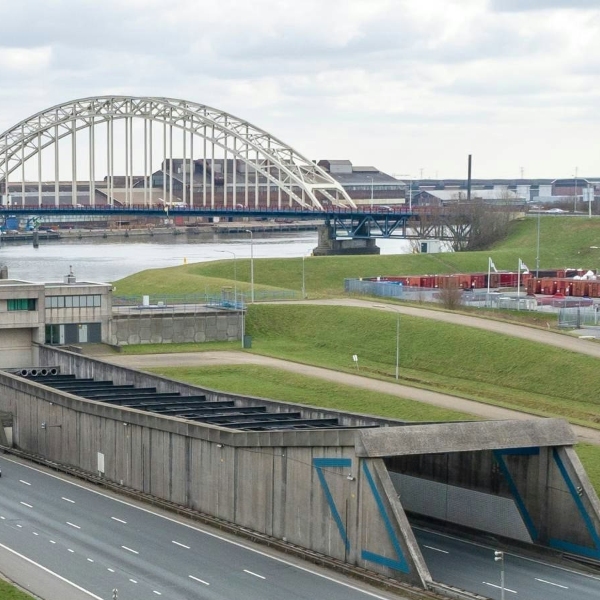Realising sustainable ambitions on North Tunnel renovation

Realising sustainable ambitions on North Tunnel renovation
Over the next few years, Rijkswaterstaat will renovate seven tunnels as part of its PTZ project. The North Tunnel is one of these and requires significant maintenance. As part of the TEC consortium, Witteveen+Bos was involved in the contract preparation phase, conducted an energy scan, and investigated opportunities for reusing removed materials.
Rijkswaterstaat aims to work in a climate-neutral and circular manner by 2030, which is why significant attention is being given to these considerations as early as the contract preparation phase. The PTZ project’s ambition is to take the lead in increasing sustainability within the VenR replacement and renovation programme, which is in line with the ambitions and philosophy of Witteveen+Bos.
The Noord Tunnel, which runs under the Noord river, has been in use since 1992 and forms part of the A15 motorway between Alblasserdam and Hendrik-Ido-Ambacht. The structure consists of two 500 m-long traffic tubes, each consisting of three lanes. The traffic tubes are separated by a central channel for staff use and emergencies. At the start of the planned renovations, maintenance will be conducted and technical systems replaced.
Lights on day and night
As the tunnel consumes a lot of energy, it was decided to perform an energy scan. This scan examined the current and expected future energy consumption of the tunnel, also investigating how energy could be used as efficiently as possible. The lights in the tunnel are on day and night. During the day, they are made brighter to compensate for the transition to daylight outside. Saving on lighting can therefore have a major impact – for example, by using LED lights and more energy-efficient systems.
The tunnel’s technical materials will also be reconsidered. Remi van Berkum, sustainable energy consultant at Witteveen+Bos, is involved in the contract preparations: ‘PTZ’s goal is reuse or circular use of 95 % of the materials removed during the renovations. We expect some 250 tonnes of materials from the Noord Tunnel. The aim is to repurpose these in a sustainable manner. We also want to explore the options for reducing the amount.’
Recycling and uniformity of systems
There are two ways to achieve such a reduction in materials: recycling and uniformity of technical systems. Remi: ‘Recycling is already a high priority at Rijkswaterstaat, but up until now it has usually involved concrete and asphalt. With tunnels, it’s mainly about technical systems. The copper used in cables is expensive and has a high environmental impact, but it’s also easy to reuse. Together with our partners, we want to explore the possibilities for properly reusing technical systems.’
‘We’re also looking for ways to make it easier to exchange components. Currently, there’s a lot of variation between tunnels. Some of the Noord Tunnel’s components are still in good condition but are difficult to reuse because they don’t fit in other tunnels. On PTZ, we’re working on standardising tunnels so it becomes easier to maintain them and reuse their systems.’